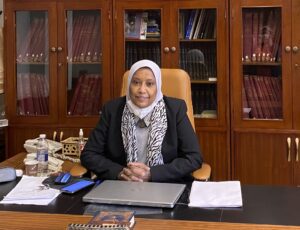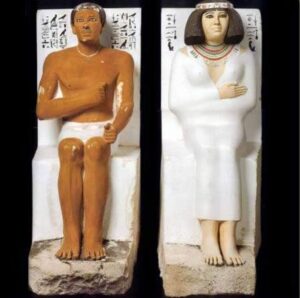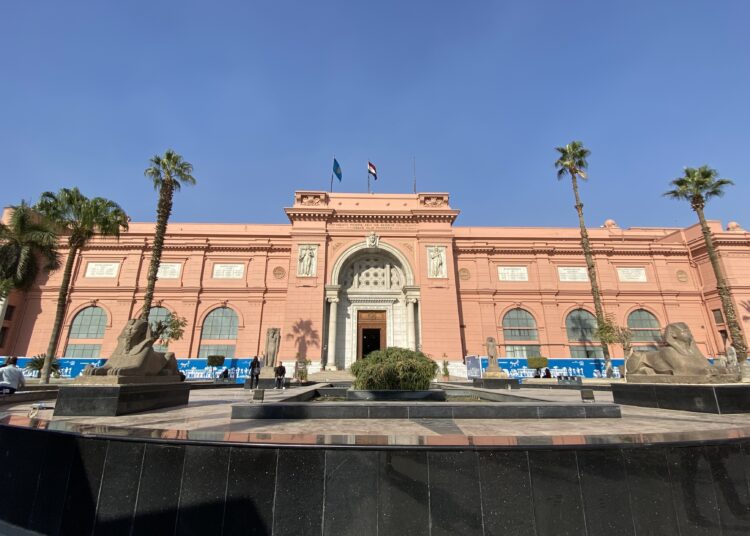While preparations are on for the opening of the Grand Egyptian Museum (GEM) this year, the Egyptian Museum in Tahrir Square is being renovated to its former glory.
Last April, UNESCO World Heritage Committee added the Egyptian Museum to its World Heritage Tentative List.
The Egyptian Mail interviewed the Director General of the Egyptian Museum, Sabah Abdel Razek, to talk about the past, present and the future of the museum, which will celebrate its 120th anniversary in November.

“The Egyptian Museum is one of the first structures in the world specifically built as a museum. It contains, and will still house, the largest collections of ancient Egyptian antiquities in the world,” Abdel-Razek said.
Egyptian antiquities were housed in four places before the construction of their final place — the Egyptian Museum.
The first was in 1835 when Mohamed Ali Pasha ordered Egyptian antiquities to be collected in one place near Ezbekiya Gardens to prevent theft and being smuggled abroad.
In 1860, the collection was transferred to the Saladin Citadel and was open for dignitaries and important foreign visitors.
“Crown Prince Rudolf of Austria came here in 1881 and admired what he saw so much that Khedive Mohamed Tawfiq Pasha gifted him with more than 700 pieces, which are currently on display at Vienna’s History of Art Museum,” Abdel Razek added.
French Egyptologist Auguste Mariette (1821-1880) carried out several excavations in Saqqara, Luxor and Fayoum, so his finds necessitated larger premises in Boulak which were later turned into a museum by Khedive Ismail (1863-1879) in 1863.
By 1893, the foreign and local digs increased, so the collection was moved to the palace of Khedive Ismail, on the site where Giza Zoo is now located. In 1895 the government erected a purpose-built museum with a basement and stores. This is the Egyptian Museum of today.
“The government selected Ismailia Square, now Tahrir Square and held an international competition for the best design. Out of 87 contestants, French architect Marcel Dourgnon won,” Abdel Razek said.
The foundation stone was laid in April 1897 and construction was completed in 1901. It took almost a year to move antiquities to the Egyptian Museum, which opened on 15 November 1902.
“The museum houses all antiquities found by Egyptians and foreigners in the last 160 years,” said Abdel Razek, who is the museum’s 32nd director and the sixth woman to hold the post.
“The museum database includes 170,000 artefacts from prehistoric times until the Graeco-Roman era,” she said, adding that the museum currently displays 50,000 artefacts.
“The remainder is in the basement and stores. From time to time we showcase some of these artefacts,” she said.
Last April, the royal mummies which were exhibited at the museum were transported to the National Museum for Egyptian Civilisation in Fustat. The Tutankhamun treasures will be exhibited in the GEM.
Abdel Razek said that antiquities of Tanis, a town in the north-east Nile Delta, were discovered during World War 2, and were kept in the museum stores. They will be displayed for the first time in the two halls in place of the Tutankhamun artefacts.
“The 2000 pieces that make up the Tanis collection include gold funerary masks, a silver coffin, a stone sarcophagus dating back to the 21st and 22nd dynasties,” she added.
“Antiquities from Deir el-Bahari in the Theban Necropolis, opposite the modern city of Luxor, will be displayed in the royal mummies’ hall. These antiquities were restored and taken from the basement for display.”
Abdel Razek said that the museum includes unmatched masterpieces such as the Narmer Palette.

“It is the oldest engraved artefact ever dating back 5,000 years. The palette depicts the unification of Upper and Lower Egypt under 1st Dynasty King Narmer [3150 BC],” she added.
There are masterpieces from the Old Kingdom, such as the diorite Khafra (Cephren) Statue, builder of the second largest pyramid at Giza. “Khafra is seated on a throne and details of his anatomy are skillfully sculpted,” she said.
The statue of Kaaper, known as Sheikh el-Balad and the statues of Prince Rahotep and his wife Nofret of the 4th Dynasty are also among the museum’s highlights, the director said.

The museum is currently undergoing a development by the Ministry of Tourism and Antiquities in cooperation with EU, represented by the heads of Egyptian antiquities departments in five European museums — Christian Greco of the Museo Egizio (Turin), Daniel Antoine of the British Museum (London), Rondot Vincent of the Louvre Museum (Paris), Lara Weiss of the National Museum of Antiquities (Leiden) and Friederike Seyfried of the Egyptian Museum (Berlin).
“Renovation work began in 2019 and will be finished soon,” Abdel Razek said, adding that they are looking at alternative display arrangements and the inclusion of archive photographs of the digs that turned up the ancient items.
Since 2004, in cooperation with foreign embassies, antiquities institutes and universities abroad, the Egyptian Museum has held temporary exhibitions every three months on set themes, plus exhibitions of artefacts on loan from museums in other governorates.
Last November, the Egyptian Museum launched its website with details of the museum’s activities and archaeological awareness campaigns for children and people with special needs.
“Children are taught something about the ancient Egyptian language, mummification, agriculture, education, sports and toys in ancient Egypt,” she said, pointing out that these activities are popular with parents, too.
Abdel Razek said the museum supports women with workshops for breadwinners for whom craftsmen are brought in to teach design in leather and copper and garniture.
“After the workshops, we hold exhibitions in the garden of the museum to show their products,” she said. “All the activities are free,” she added.
“There is constant activity inside the museum to link the present with the ancient past.”






Discussion about this post